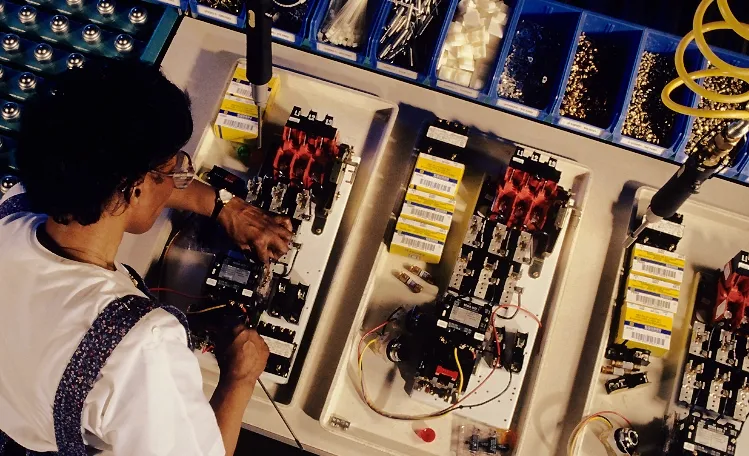Digital Transformation and the Benefits That Can Be Realized by Going Paperless

Today more than ever one would think that U.S. businesses consume less and less paper each year. Despite the many opportunities that exist now to take a business digital in place of paper, paper consumption in the U.S. continues to increase. Regardless, there are many organizations turning to solutions for going digital and realizing benefits from going paperless.
A Financial Institution Goes Paperless

Ethan Taub
Ethan Taub is CEO of financial institutions Goalry and Loanry and Taub embarked on paperless efforts for both businesses. To implement a paperless initiative, Taub says they decided to go for a staggered approach. Each staff member had their own recycling box by their desk. These were weighed each week on a Friday and the lightest had a spot price.
“The winner each month got a $100 voucher and we kept this going until everyone’s weight in the boxes were all the same as if they contained no paper,” said Taub. “This was effective because it used the carrot approach and stoked employees’ competitive nature.”
By going green, Taub says he values the offset the business impact has on the environment and the conservation of energy. Also, going paperless was better for them and their customers. This includes providing conveniences like online receipts rather than paper, which removes concerns for lost receipts.
Since they went paperless, they have not looked back. Simple things help keep them in line, such as activating a pop-up reminder on everyone’s computer saying, “think before printing, do you really need a paper copy of this?” It worked so well they removed their fax machine and printer from the office.
Insights from Illuminate Labs’ Digital Transformation
Calloway Cook
Illuminate Labs is a U.S. supplement manufacturer. Calloway Cook, president of Illuminate Labs, said they went paperless in 2019, as a part of their process of becoming a certified B Corp. They made this decision from an environmental perspective, but it had efficiency benefits they did not predict.
Cook said they found that it was vastly more efficient to locate old files in a paperless format than before. They typically use Google Drive or e-mail for this.
“We could recall years-old information with a quick Google Drive search instead of having to maintain meticulous records of documents that could be lost or stolen any time,” said Cook.
Cook admits their digital transition was obviously easier for them as a small business than it would be for a larger company. However, he recommends businesses of any size explore going paperless, for the environmental benefits, cost savings, and efficiency gains.
An Intel Department Goes Paperless
Sarah Petrova
Sarah Petrova, Software Engineer at Intel & Co-founder of Techtestreport, said they set the goal to implement a 100 percent paperless system at their department at Intel, starting around 2018. Petrova noted they understood no company can cut out all paper with one big blow.
“Many documents must still be printed, in particular customer audit reports, which are a central part of our business,” said Petrova. “The production process for these reports in our internal printing works was slow and complex.”
On Techtestreport.com, the team operates a consumer magazine focused on the newest technologies in the hardware and IT sector. She was involved in the planning and implementation process of going paperless and gained many insights into what effects going paperless can have on internal business processes.
Petrova states they wanted to eliminate all inefficiencies and additional cost that come with a reliance on paper. And they thought a paperless system would allow them to create more efficient business processes in their department. She states they largely achieved their goals. Petrova adds that the positive effects and synergies that came out of the new digital system even exceeded their expectations. They cut administration cost by 30 percent. Most of this resulted from a lot of automation of tasks by software that were previously done by employees.
Petrova adds that the positive effects and synergies that came out of the new system even exceeded their expectations. They cut administration cost by 30 percent.
To help achieve their paperless goals, they customized a solution from Xerox. They also now use DocuSign, Evernote, Xero.com, ccscan and customized software for internal processes. These solutions help transition previous paper-based processes to digital ones.
As far as obstacles to achieve this, Petrova says they could not anticipate how big of an effect going paperless would have on almost every administrative business process. They had to restructure a lot of old processes and then create new and more efficient ones.
“That took a lot of time,” she said. “If we had to do it again, we would definitely plan more ahead in terms of what’s going to be affected by going paperless, in order to be better prepared.”
Select Software Reviews Remote Work Propels Paperless
Phil Strazzulla
Phil Strazzulla, CEO & Founder of Select Software Reviews said the main reason they went paperless as a business was because they are a remote team. They needed a way to manage everything from a centralized location that was not a physical spot.
“We couldn’t have each member of the team holding on to various important documents like contracts because it meant we would have to ship them around to a main office, which we didn’t have,” said Strazzulla.”
By keeping everything as paperless as possible, they now have everything in an easy to access place for the whole team. The biggest benefit they have found so far has been on the organizational end of things. They use Google Drive to store and manage a lot of their documents. They can easily share things with each other and with anyone outside the team. They do not have to print anything out or wait for it to arrive through snail mail.
Strazzulla also said they have noticed that it is much easier to collaborate on projects. Instead of sitting around a room, tossing ideas around and waiting for something to happen they can jump into the document and edit as a group. Often, they have Zoom or other communications applications going so they can talk through things as they edit. As a result, the quality of their work has improved.
Their biggest concern with going paperless centers on privacy and security. But they maintain strict control over who does and does not gain access to their files.



 Blog
Blog